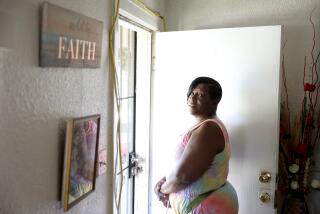Schools Make or Break
- Share via
Children taken into the county’s care already carry the burden of their parents’ neglect or abuse. On top of that, the miserable, sporadic schooling many county foster children get often seals their futures as adult failures.
More than 80% of foster children have been held back by the third grade and 46% don’t finish high school. No surprise then that 51% of foster youth are unemployed after they reach 18 and 25% become homeless.
Many of these youngsters have physical disabilities and emotional problems that cloud their prospects for even high school graduation. Many more go into county care from chaotic homes, having already accumulated a string of Ds, Fs and unexplained absences.
Social workers uproot local foster children an average of four times while they are in county care; moves from, say, South Los Angeles to Lancaster are not uncommon. Each new foster home can mean navigating a new school and losing friends and favorite teachers. Transcripts can go missing en route to the new school, leaving kids playing video games for weeks before they can enroll, and sometimes credits don’t transfer from one district or school to another.
Quality is an even bigger problem. Foster children with learning disabilities often don’t get the special help and remediation they’re entitled to in public school. For hundreds of children, the state pays up to $40,000 a year for special private schools, some of which operate out of converted motels or strip mall storefronts. However, a recent CBS 2 television investigative report found classrooms with no teachers and, in one case, a teacher playing dominos while her students watched “The Incredible Hulk.”
A summit last May that brought together local foster care and school experts, the first ever, has produced an agenda for change. County supervisors have endorsed these recommendations. Now comes the hard part, getting the 80 area school districts and the county departments responsible for foster care, mental health care and other social services to work together.
A good first step would be the establishment of a proposed coordinating council with representatives of each agency. Working together, these problem solvers could straighten out bottlenecks holding up school records, get help for children struggling with their multiplication tables, keep kids in schools they like and crack down on the private schools that don’t teach.
Foster children go into the system after they’ve been failed or harmed by the adults around them. Decent schooling may offer them their last chance to learn to become successful adults.
More to Read
Sign up for Essential California
The most important California stories and recommendations in your inbox every morning.
You may occasionally receive promotional content from the Los Angeles Times.













